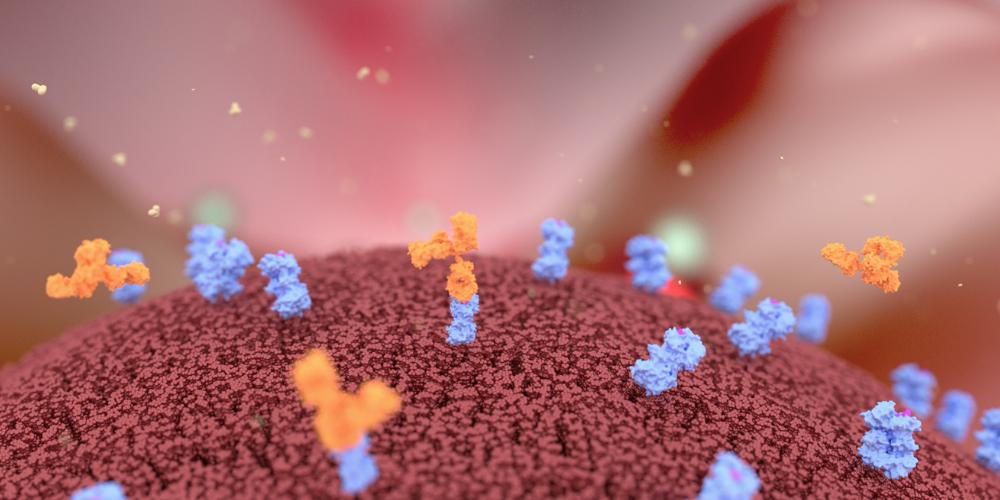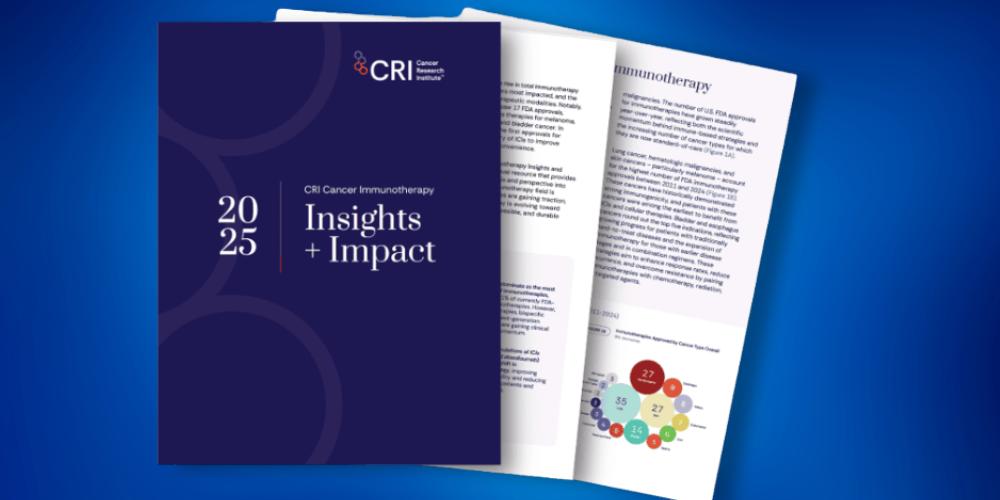MSK on Adding ADCs to Checkpoint Blockade for Bladder Cancer Patients
Memorial Sloan Kettering Cancer Center’s Chief of the Genitourinary Oncology Service explains where, how and potentially why the addition of antibody-drug conjugates is improving treatment response and durability for metastatic bladder cancer patients.

How has the combination of antibody-drug conjugate and checkpoint inhibitors revolutionized treatment for patients with metastatic urothelial cancer?
The clinical results from several trials suggest that patients get a high response rate from enfortumab vedotin (the antibody-drug conjugate) that is made durable from pembrolizumab (the checkpoint inhibitor) in many patients.
As a monotherapy, enfortumab had a roughly 45% response rate, and thus is the most potent single-agent treatment we have. However, from a durability perspective, it is inferior to the combination with pembrolizumab. The first study of enfortumab and pembrolizumab showed 40% of patients were alive at five years, where we would expect that number to be 10-15% at best. The Phase III trial suggests that number could be in the high 30s.
"This underlying hypothesis suggests that killing of cancer cells in the tumor microenvironment with different mechanisms leads to improved immune recruitment to the tumor and signaling from the immune system to improve outcomes."
What are your thoughts on why it’s so potentially transformative?
One school of thought is that the benefits are simply additive, but there's clear preclinical data with enfortumab and checkpoint inhibitors that immunogenic cell death is occurring but we don’t know how much that’s occurring in human beings. This underlying hypothesis suggests that killing of cancer cells in the tumor microenvironment with different mechanisms leads to improved immune recruitment to the tumor and signaling from the immune system to improve outcomes.
Is the ADC-ICI combination being used in direct sequence after chemotherapy, or being used in place of chemotherapy?
It's being used as a combination in untreated metastatic disease as first-line therapy instead of platinum-based chemotherapy. In that scenario, platinum-based chemotherapy has moved into the refractory setting. ADC-ICI as first-line doubled survival compared to chemotherapy. The hazard ratio about 0.5 for both PFS and OS, and we're approaching three years median survival when historically it's between 14 and 18 months.
Before the addition of ADCs to checkpoint blockade, how did checkpoint inhibitors function as a single-agent or with chemotherapy?
Checkpoint inhibitors were initially looked at in the post-platinum setting. The benefits as a single agent in platinum-refractory cancers are very real, but the proportion of patients who benefit is modest- about 15-25% of patients in the refractory setting will have complete or partial responses. The durability of those responses are much better than any other treatment in that line at that time. In that regard, the long-term outcome for that percentage of patients is fantastic.
As a single agent in untreated metastatic disease in the first-line setting, they did not fare well in clinical trials. Both single-agent and dual-immune checkpoint blockade with CTLA-4 and PD-1 or PD-L1 failed to improve survival based on the study designs. The two Phase III trials that looked at that – one with durvalumab and tremelimumab, and the other with nivolumab and ipilimumab – had better long-term survival at late timepoints with the checkpoint inhibitors in the first-line setting, but the study designs were unable to show that in a statistically significant fashion.
Is there still utility for single-agent checkpoint inhibitors for bladder cancer patients?
What we see with single-agent checkpoint inhibitors in the early data was that patients did worse initially and then ultimately did better long-term because of the durable remissions. The biggest home for single-agent checkpoint inhibitors has been in the maintenance setting after response to chemotherapy. By immediately sequencing it in patients who have had a response or stable disease in the metastatic setting, you can get rid of that early decrement in survival - treating first with chemotherapy and then switch maintenance with immune checkpoint inhibition. That’s been seen across urothelial cancer in the metastatic setting, and so it’s had an important role as a single agent. In the adjuvant setting, it is approved and uses following resection to reduce relapses, with strong trends towards improving overall survival.
What has been the data of checkpoint inhibitors in combination with chemotherapy?
Two phase III trials, one in metastatic patients and one in the perioperative setting, both showed improved outcomes when you add checkpoint inhibitors to cisplatin-based chemotherapies. Interestingly, in contrast to lung cancer, immune checkpoint inhibitors failed to improve outcomes when combined with carboplatin-based therapies.
Do you have a good understanding of which patients would go on the ADC-checkpoint inhibitor combination versus chemotherapy followed by checkpoint inhibitors?
When we look at forest plots for subgroups, clinically there is not a subgroup where the benefit is not the same from ADC-checkpoint inhibitors as it is for the overall population. While there are prognostic differences between different subsets of patients, such as patients with liver metastases, these poor prognostic subsets benefit as much from enfortumab vedotin-pembrolizumab (in comparison to chemotherapy) as those without those poor prognostic features, but the prognosis for those subsets overall isn’t as good.
But there is some data from the Phase III trial of gemcitabine-cisplatin and nivolumab that patients who have lymph node-only disease do extraordinarily well in their subset analysis. That doesn’t necessarily mean they would not do extraordinarily well with enfortumab vedotin-pembrolizumab. There are a bit of dueling narratives around that subset of patients (10-15% of patients) for whom cisplatin-based chemotherapy plus nivolumab is a very good treatment for lymph node-only metastatic urothelial cancer but it's not clear if it's better than enfortumab and pembrolizumab in that same population.
"To improve the immune part of the equation, we need a more sophisticated understanding of why MMAE-based ADCs work well with PD-1/PD-L1 Inhibitors to discern what can be augmented."
What’s limiting the wider use of enfortumab vedotin?
MMAE toxicities, including peripheral neuropathy, skin toxicity, and rare cases of pneumonitis can be treatment-limiting. One of the prices of success is that if you’re on it for a long time, that means that the treatment is working but it does increase your likelihood of developing peripheral neuropathy. Most oncologists don’t see many patients with metastatic urothelial cancer, and since enfortumab vedotin is only used in one disease at this time, the toxicities may be less familiar to them.
What’s the next phase of incorporating ADCs and ICIs into urothelial cancer treatment?
One avenue is how we can improve things in the first-line setting. One way to do so is combining two different payloads – either in two different ADCs or a single ADC – to do, in effect, combination chemotherapy along with a checkpoint inhibitor. We know that single-agent cytotoxic chemotherapy is not curative in almost any setting, but if you target two different mechanisms of action, you might have better luck killing off resistant tumor cells. Historically, we have found across diseases that multi-agent chemotherapy regimens can significantly improve outcomes. So that’s one area that will be highly developed over the next few years.
There was recent news that enfortumab vedotin and pembrolizumab improved response rates, event-free survival and overall survival in the perioperative setting in cisplatin-ineligible patients. This is the first perioperative enfortumab vedotin-pembrolizumab trial to report data, and we expect to see several others report the results in the coming years. This research is likely to move this regimen to localized disease, and for some patients we might see that first-line therapy after relapse may be platinum-based chemotherapy.
What do we need to understand better in order to make improvements in treatments for patients?
To improve the immune part of the equation, we need a more sophisticated understanding of why MMAE-based ADCs work well with PD-1/PD-L1 Inhibitors to discern what can be augmented. We may get lucky and stumble upon something. There are bispecifics, such as PD-1/VEGF bispecific antibodies that are incredibly promising in lung cancer. Novel immune approaches such as these and investigational agents like CTLA-4 minibodies and other bisepcific antibodies are likely to lead us to the next generation of breakthroughs in immunotherapy for urothelial cancer.









